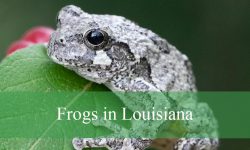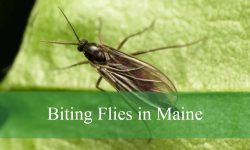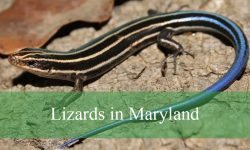Living in New Mexico and finding spiders in your home or garden? Curious about which ones are harmless and which could pose a threat? Spiders in New Mexico come in various shapes and sizes, and knowing how to identify them is key to maintaining a safe environment.
This guide will offer you essential tips on recognizing the most common spiders in New Mexico, helping you understand their unique traits and behaviors.
Keep reading for a comprehensive look at these spiders and the safety measures you can take to protect yourself and your family.
Different Types of Spiders in New Mexico
Western Black Widow
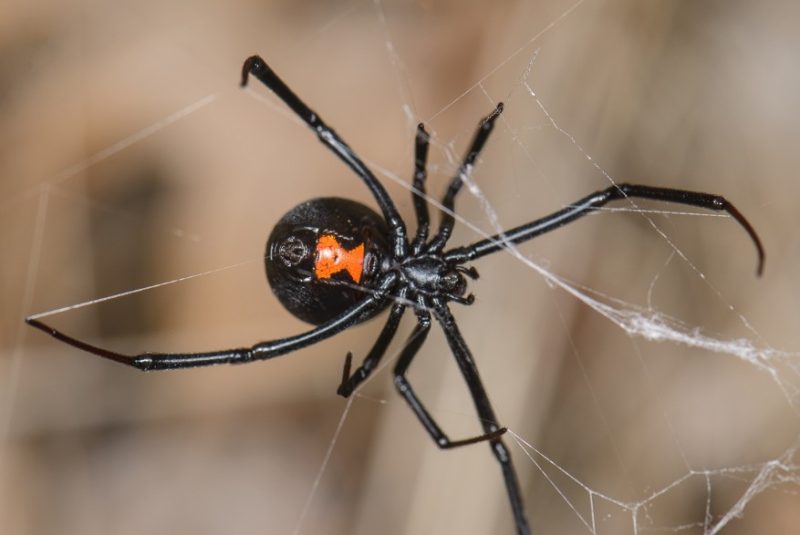
The Western Black Widow (Latrodectus hesperus), belonging to the Theridiidae family, closely resembles its southern counterpart. Sporting a shiny black body with a red-orange hourglass mark on its abdomen, this species shares its sibling’s venomous nature. Its venom, up to 15 times more potent than a rattlesnake’s, can induce severe symptoms known as latrodectism. Female western black widows, dominant and long-lived, often consume their mates after mating.
Found predominantly indoors, they weave sticky cobwebs to ensnare unsuspecting prey like insects and small arthropods.
Brown Widow
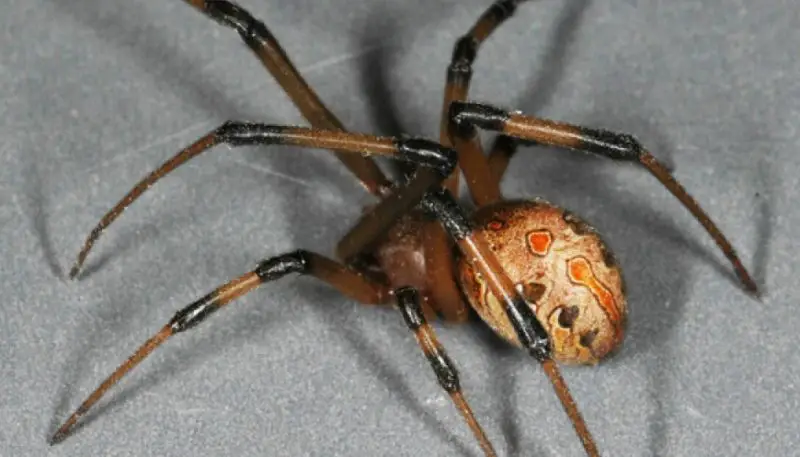
The Brown Widow (Latrodectus geometricus), a member of the Theridiidae family, shares traits with its black widow relatives. While its venom can cause pain and swelling, severe symptoms are rare due to the smaller dose it injects. Sporting a black cephalothorax and a reddish-hourglass mark, it’s identifiable by its brown, patterned abdomen and legs.
Unlike black widows, it favors slightly more exposed areas like eaves and garages. Building messy cobwebs for shelter and hunting, it preys on arthropods and crafts silk egg sacs to protect its offspring, similar to black widows.
Brown Recluse
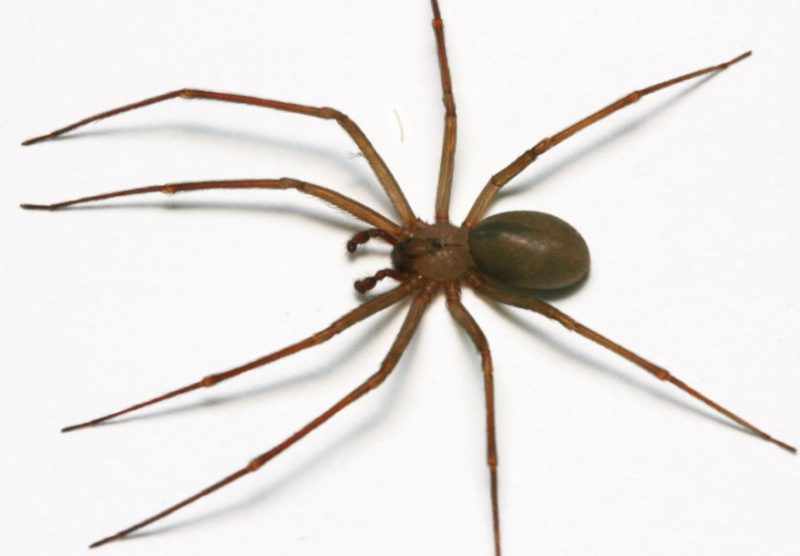
The Brown Recluse (Loxosceles reclusa) from the Sicariidae family is a secretive arachnid known for its violin-shaped marking on the carapace, earning it names like “violin spider” or “fiddleback spider.” Preferring seclusion, females remain in one spot for extended periods, while males venture out, especially during mating season.
Despite their elusive nature, they’re infamous for their cytotoxic venom, which causes painful sores or ulcers in humans. While bites may sometimes be venomless, urgent medical attention is crucial due to potential severe symptoms. Thankfully, bites are rare, occurring mainly in self-defense.
Bold Jumping Spider
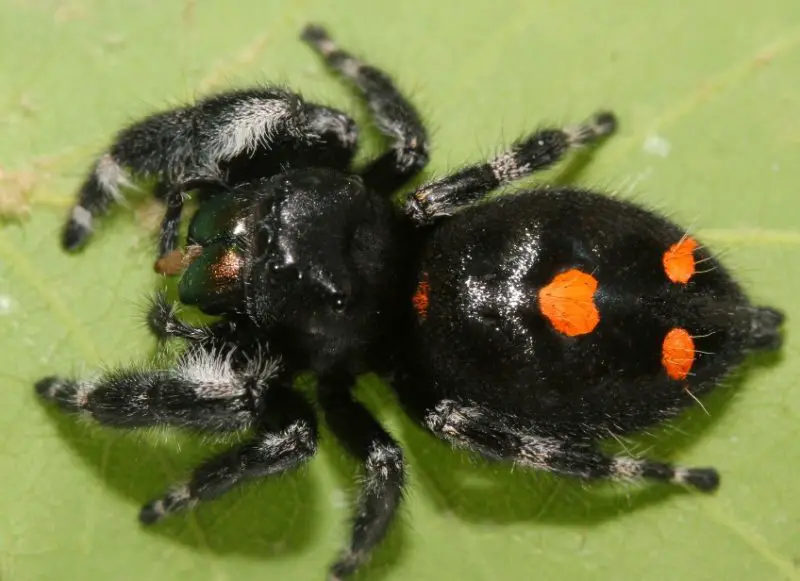
The Bold Jumping Spider (Phidippus audax), part of the Salticidae family, is a remarkable arachnid known for its agility and keen eyesight. With stout legs adept at launching them into high jumps, they’re distinguishable by their enlarged front pair of eyes, aiding in sharp vision.
Sporting a black body with whitish hairs on leg joints and three reddish-orange markings on the abdomen, they’re easily recognizable. Preferring hunting over web-spinning, their harmless venom poses no threat to humans, making them curious and fascinating creatures to observe.
Texas Brown Tarantula
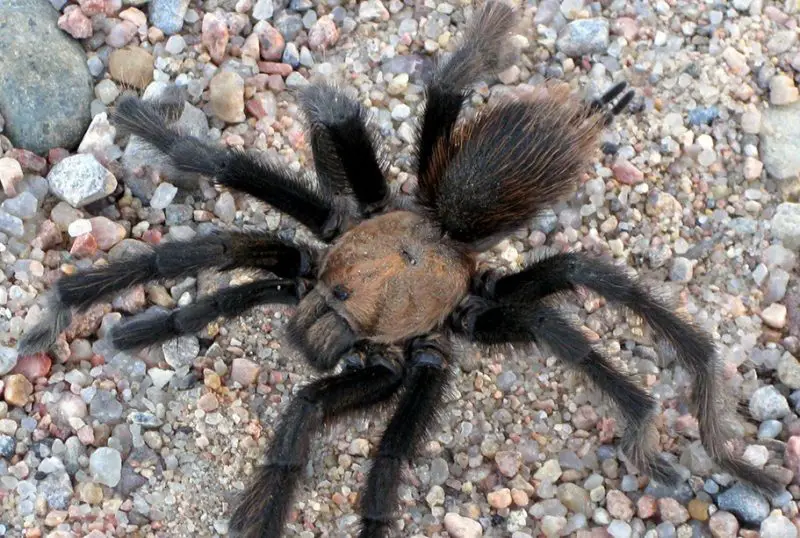
The Bold Jumping Spider (Phidippus audax), part of the Salticidae family, is a remarkable arachnid known for its agility and keen eyesight. With stout legs adept at launching them into high jumps, they’re distinguishable by their enlarged front pair of eyes, aiding in sharp vision.
Sporting a black body with whitish hairs on leg joints and three reddish-orange markings on the abdomen, they’re easily recognizable. Preferring hunting over web-spinning, their harmless venom poses no threat to humans, making them curious and fascinating creatures to observe.
Western Parson Spider
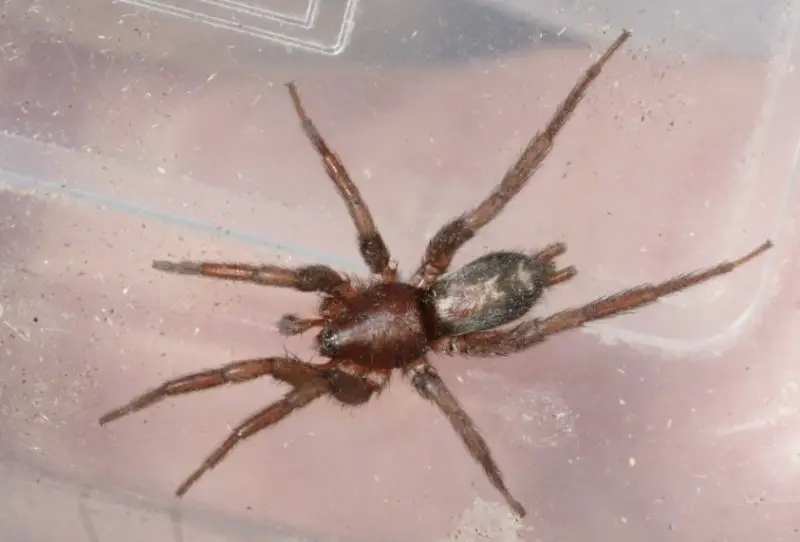
The Western Parson Spider (Herpyllus propinquus), a member of the Gnaphosidae family, is a dark gray or black, hairy arachnid with a white pattern on its back, resembling an 18th-century clergyman’s cravat.
Found in various parts of New Mexico, it resides in crevices or under debris, emerging at night to hunt. These spiders don’t spin typical webs but stalk and subdue prey with venom, which is harmless to humans. While generally non-aggressive, they can bite if threatened.
Southern Black Widow
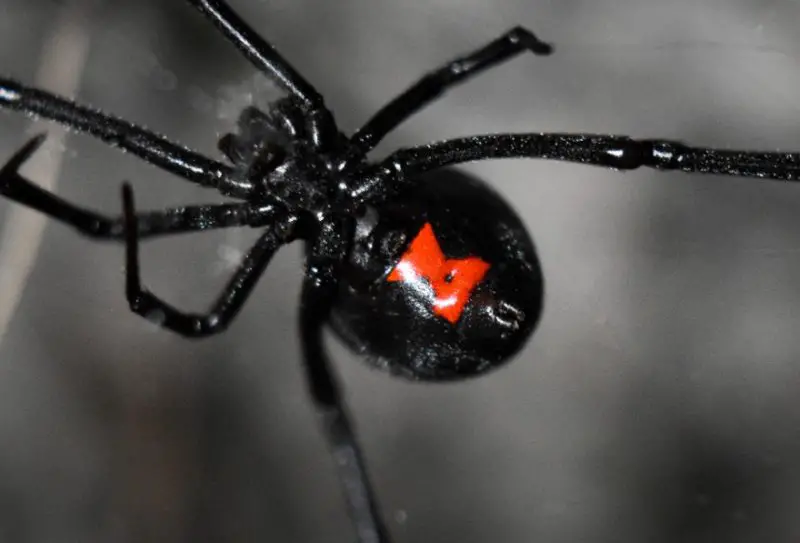
The Southern Black Widow (Latrodectus mactans), a member of the Theridiidae family, is a notorious arachnid found in New Mexico and across North America. With a sleek black body measuring up to 0.5 inches and a distinctive red-orange hourglass marking, it’s unmistakable. While infamous for their venomous bites, these spiders typically only strike when provoked.
Found mostly indoors, they weave intricate webs to ensnare prey like flies and gnats, while also creating silk egg sacs to safeguard their offspring.
Carolina Giant Wolf Spider
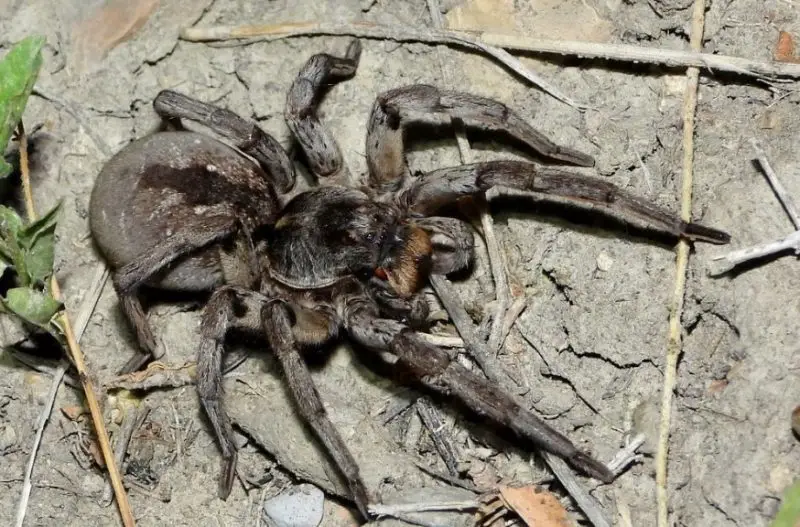
The Carolina Wolf Spider (Hogna carolinensis), the largest wolf spider in North America, measures 0.70 to 1.5 inches and has a lifespan of up to two years. This brown spider features two broad black stripes on its carapace and chevron patterns on its abdomen. A hunter that ambushes prey, it uses venom to immobilize victims, though its bites are harmless to humans.
Preferring arid habitats, it’s non-aggressive and rarely bites unprovoked. Females carry egg sacs and spiderlings on their backs until they mature.
Western Desert Tarantula
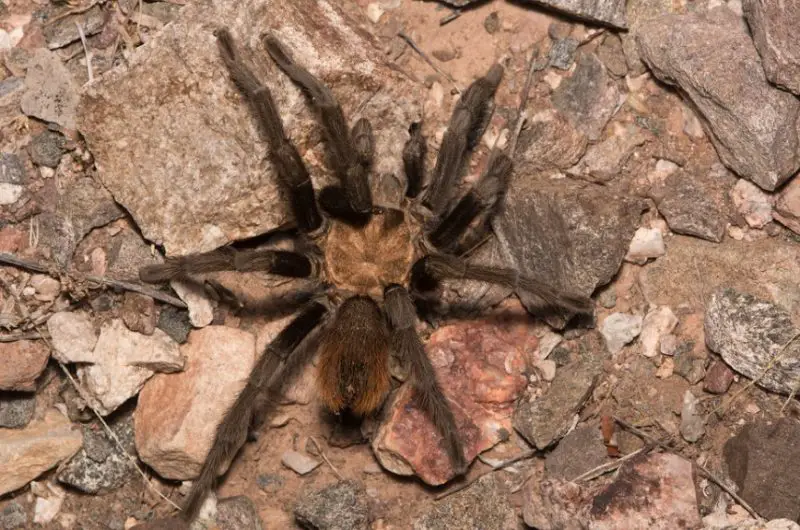
The Desert Blonde Tarantula (Aphonopelma chalcodes) belongs to the Theraphosidae family and is also known as the Arizona Blonde Tarantula or Mexican Blonde Tarantula. This large spider, measuring 1.5 to 2 inches, can live for 5 to 30 years. It has a tan or brown body with a blonde carapace and abdomen.
Found in arid regions, it lives in silk-lined burrows and hunts small arthropods. Although its size may be intimidating, it rarely bites humans unprovoked, and its venom is harmless, causing only mild pain and swelling.
Southern House Spider
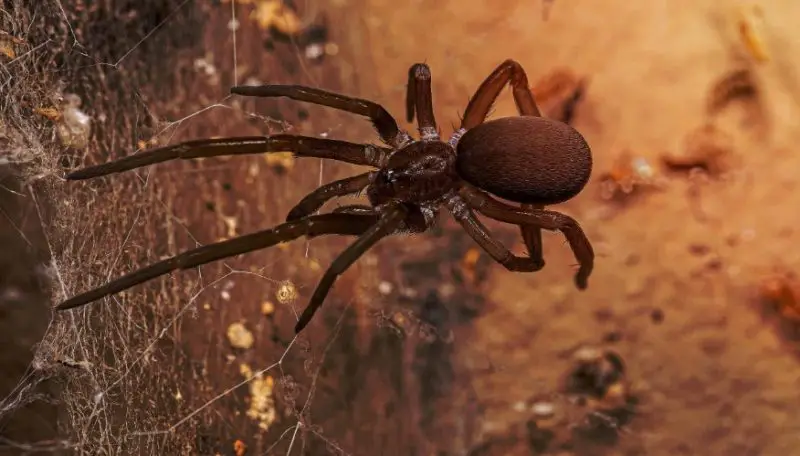
Southern House Spiders (Kukulcania hibernalis) belong to the Filistatidae family. They are also known as Giant Crevice Weavers or Southern Crevice Spiders. These spiders, measuring 0.31 to 0.75 inches, have a lifespan of 1 to 8 years.
They are commonly found indoors in dark, sheltered areas like closets, windowsills, and crevices. They spin wooly, non-sticky webs to trap small arthropods and emerge at night to hunt. Though venomous, their bites are not medically significant to humans.
European Cross Orbweaver
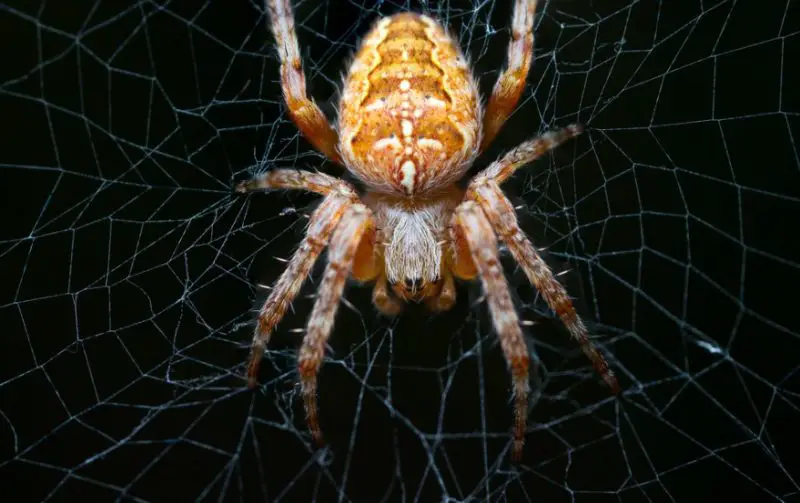
The European Cross Orb-weaver (Araneus diadematus), from the Araneidae family, measures 0.22 to 0.79 inches and has a lifespan of 1 year. Known as the Cross Orb-weaver or Pumpkin Spider, it’s common in gardens, forests, and near human-made structures. This spider builds wheel-like webs with sticky threads, sitting in the center to wait for prey.
While its venom is effective against insects, it is harmless to humans and bites only in self-defense. Its brownish abdomen features distinctive cross-like white spots.
American House Spider
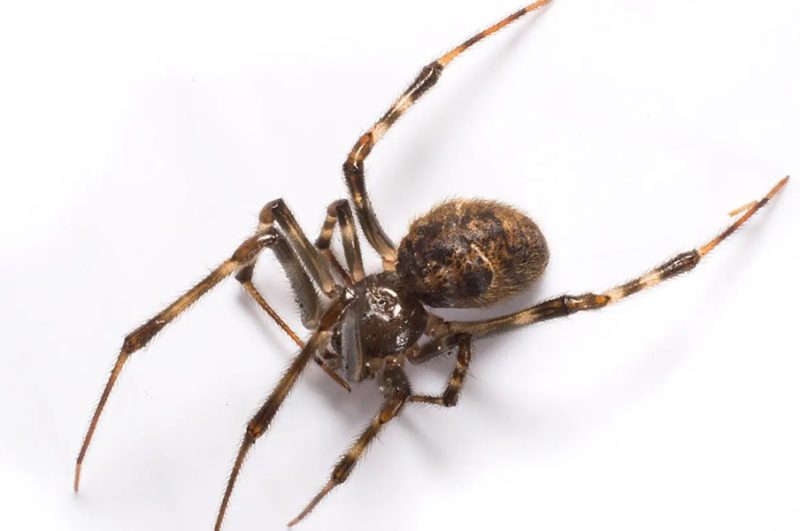
The Common House Spider (Parasteatoda tepidariorum), a member of the Theridiidae family, measures 0.15 to 0.24 inches and has a lifespan of 1 year. Unlike its black widow relatives, its bites are relatively harmless, causing only mild pain.
It rarely bites unless provoked and prefers indoor habitats, spinning sticky cobwebs in dark corners. Feeding on insects and other arthropods, it plays a vital role in controlling pest populations within homes.
Barn Funnel Weaver
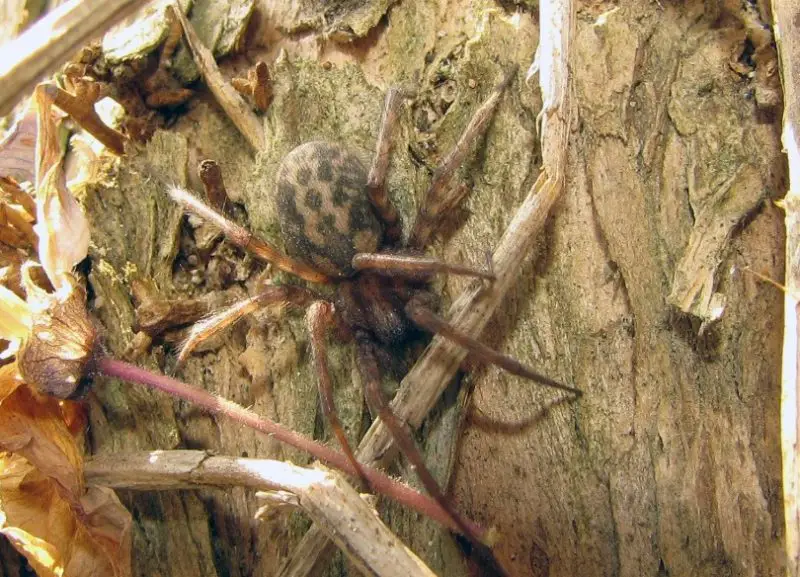
The Barn Funnel Weaver (Tegenaria domestica), part of the Araneidae family, spans from 0.24 to 0.45 inches and lives up to 7 years. Common in gardens and often found in garages and sheds, they are also known as Drain Spiders.
Despite their name, they don’t dwell in drains but prefer wall crevices indoors. Outdoors, they weave funnel-shaped webs to catch prey. Harmless to humans, they rarely bite unless provoked.
Arrowhead Orbweaver
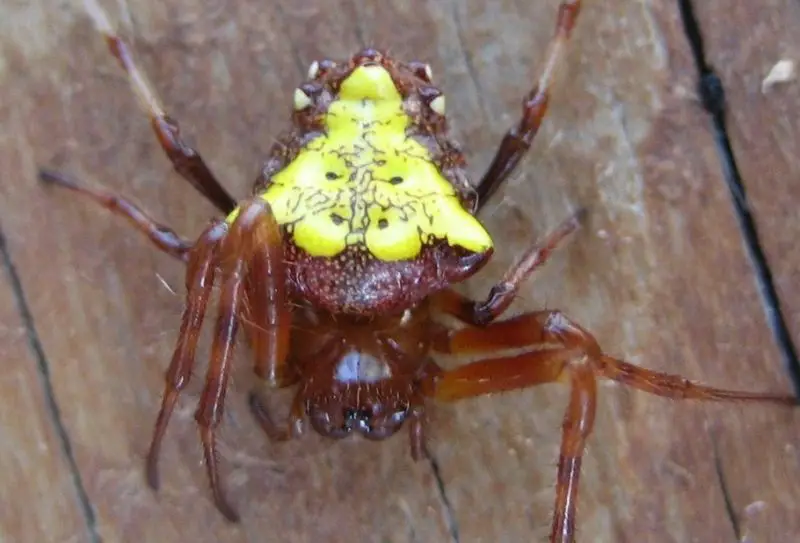
The Arrowhead Orbweaver (Verrucosa arenata) from the Araneidae family measures between 0.15 to 0.55 inches and has a lifespan of up to 1 year. With a reddish-brown hue and leg spines, it stands out with its triangular abdomen.
Found among woody vegetation, they spin orb webs to catch prey. Despite their aggressive hunting behavior, they are docile toward humans, rarely biting even when provoked. If bitten, their mild venom causes no serious harm.
Bark Crab Spider
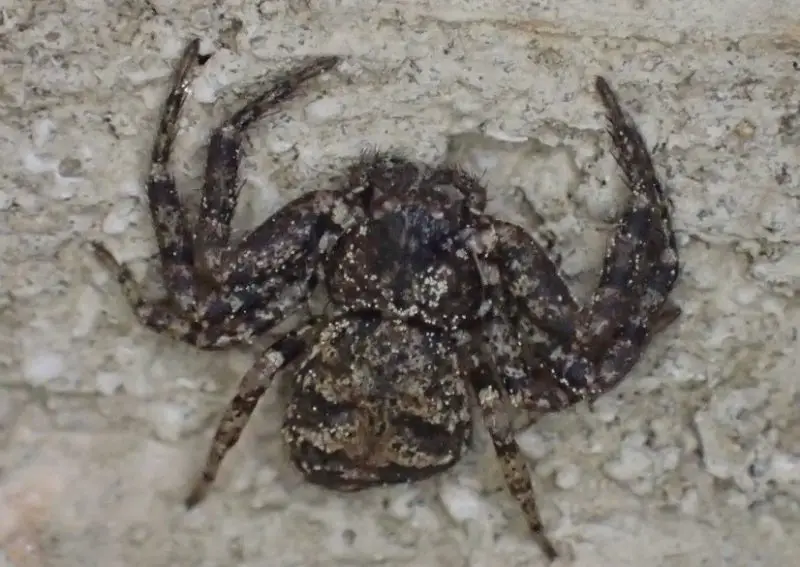
The Bark Crab Spider (Bassaniana versicolor) from the Thomisidae family measures between 0.15 to 0.27 inches and has a lifespan of 1 year. Its black body, adorned with brown mottles, offers effective camouflage on tree barks in forests.
Resembling crabs, it moves forward, backward, and sideways, thanks to its longer first two pairs of legs. This swift hunter doesn’t use webs but relies on venom to subdue prey. Harmless to humans, it rarely bites unless provoked.
Arrow-shaped Micrathena
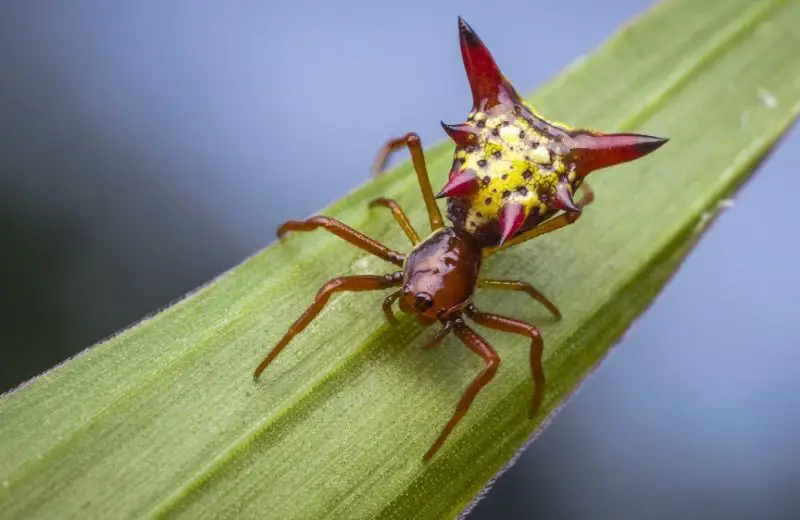
The Arrow-shaped Orbweaver (Micrathena sagittata) belongs to the Araneidae family, measuring between 0.2 to 0.35 inches and living up to a year. Its body features orange or reddish-brown hues with distinctive yellow stripes along the cephalothorax. The abdomen is yellow with black spots and three pairs of pointed tubercles, resembling an arrow.
These spiders construct large orb webs to ensnare prey, relying on vibrations to locate caught insects. Harmless to humans, they seldom bite unless provoked.
Banded Fishing Spider
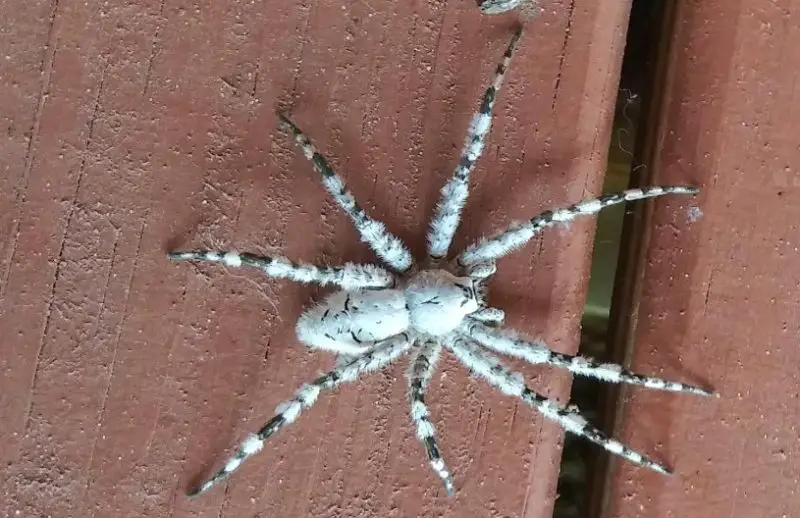
The Banded Fishing Spider (Dolomedes vittatus), from the Pisauridae family, ranges in size from 0.27 to 1 inch and has a lifespan of about a year. Commonly found near water bodies like streams and ponds, it’s also sighted in coastal forests and prairies.
This species, skilled in both terrestrial and aquatic hunting, uses vibrations to detect prey and can even dive underwater to capture it. Although their bites are painful, they’re not medically significant unless provoked.
Cork-lid Trapdoor Spider
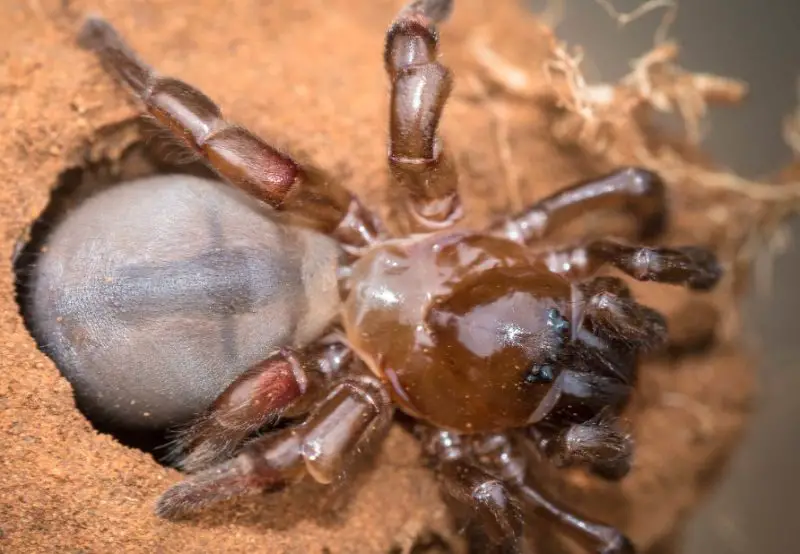
The Cork-lid Trapdoor Spider (Ummidia spp.) belongs to the Halonoproctidae family, reaching sizes of up to 1.6 inches and boasting lifespans ranging from 5 to 20 years. With its dark brown to black body, stout legs, and large fangs, it’s a striking sight.
This spider creates silk-lined tunnels on the ground, which it conceals with a lid crafted from silk and debris, allowing it to ambush prey with swift efficiency. Despite its imposing appearance, it’s unlikely to bite humans unless provoked.
Bolas Spider
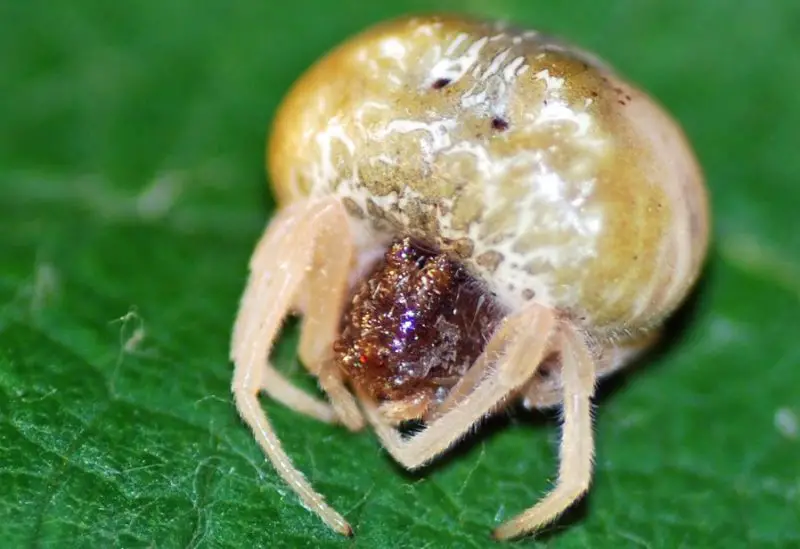
The Southern Bolas Spider (Mastophora cornigera) is a member of the Araneidae family, with an adult size ranging from 0.07 to 0.59 inches and a lifespan of about 1 year. This intriguing arachnid features a distinctive abdomen adorned with two small bumps near its cephalothorax, while its carapace and legs typically exhibit brown hues.
Unlike conventional orb-weavers, it employs a single line of silk, called a bolas, with a sticky blob at one end, mimicking Native American bolas, to capture its prey—male moths—by swinging it from its legs.
Bowl and Doily Spider
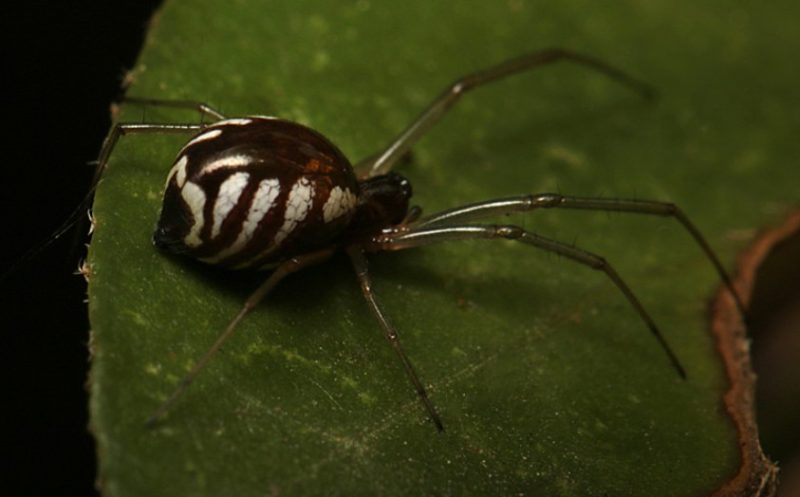
The bowl and doily spider, scientifically known as Frontinella pyramitela, belongs to the Linyphiidae family. With an adult size ranging from 0.12 to 0.16 inches and a lifespan of about one year, this diminutive arachnid showcases a brown hue, a glossy carapace, and a distinctive abdomen adorned with vertical whitish lines that resemble commas.
Often found in forests and woodlands, it constructs a complex web comprising a doily-like sheet anchored to tree trunks and a bowl-shaped component, effectively ensnaring flying insects for its sustenance. Despite its intricate web-building prowess, it poses minimal threat to humans, exhibiting non-aggressive behavior and producing venom of negligible potency.
Giant Crab Spider
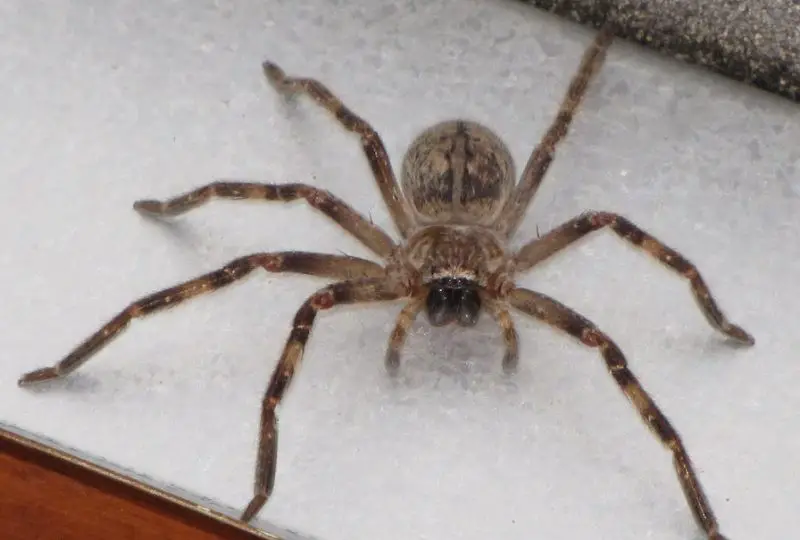
The giant crab spider, scientifically known as Olios giganteus, is often mistaken for a true crab spider due to its flattened body and sideways movement ability. Despite its intimidating appearance with its hairy black or gray mouthparts and brown legs, it’s harmless to humans unless provoked.
Typically found in dry habitats, it prefers outdoor environments but may venture indoors occasionally. While its bite can be painful, the venom poses no serious threat to humans. Female spiders construct protective silk sacs for their eggs, fiercely guarding them until they hatch.
Furrow Orbweaver
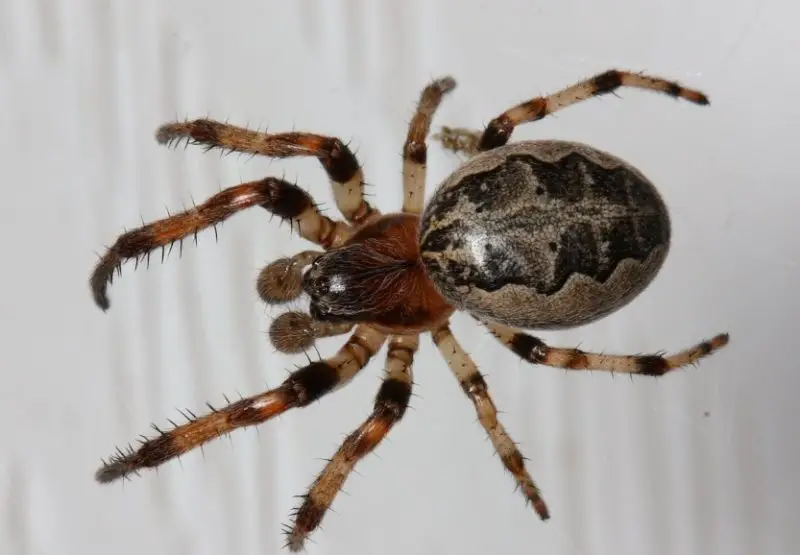
The furrow orb-weaver, also known as Larinioides cornutus, is recognizable by its brown body adorned with spines on its legs. Its abdomen features a distinct dark pattern resembling furrows or serrated leaves.
Typically found in forests, gardens, and residential areas, these spiders spin large, orb-like webs to catch prey. While non-aggressive, they immobilize their victims with venom after sensing vibrations on their webs. Their bites, though rare, are harmless to humans, causing only mild pain or itching.
Goldenrod Crab Spider
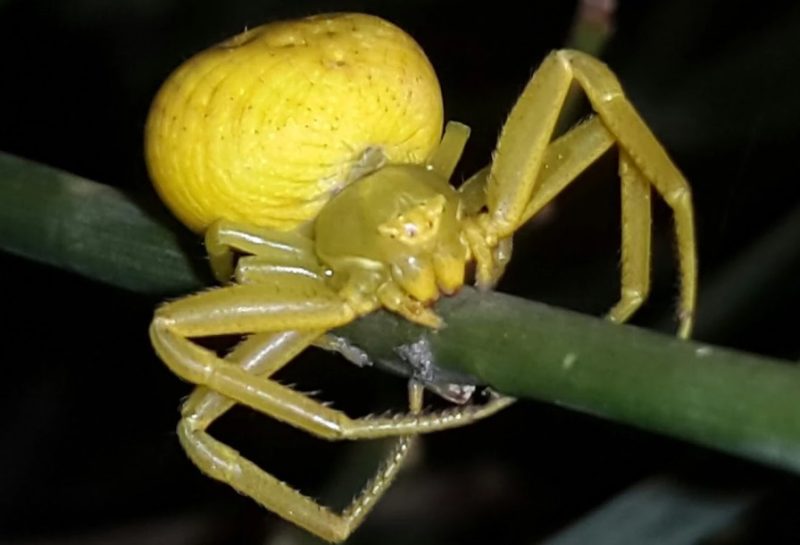
The goldenrod crab spider, scientifically known as Misumena vatia, boasts a yellow, white, or pale green body with a wide oval belly. Its unique appearance and flattened body resemble those of real crabs. Typically found amidst vegetation, females often inhabit flowerheads, where they patiently await unsuspecting prey.
These spiders are skilled hunters, ambushing their victims with their strong front limbs and injecting them with venom. Despite their formidable appearance, goldenrod crab spiders are non-aggressive, and their bites pose no significant threat to humans.
Running Crab Spider
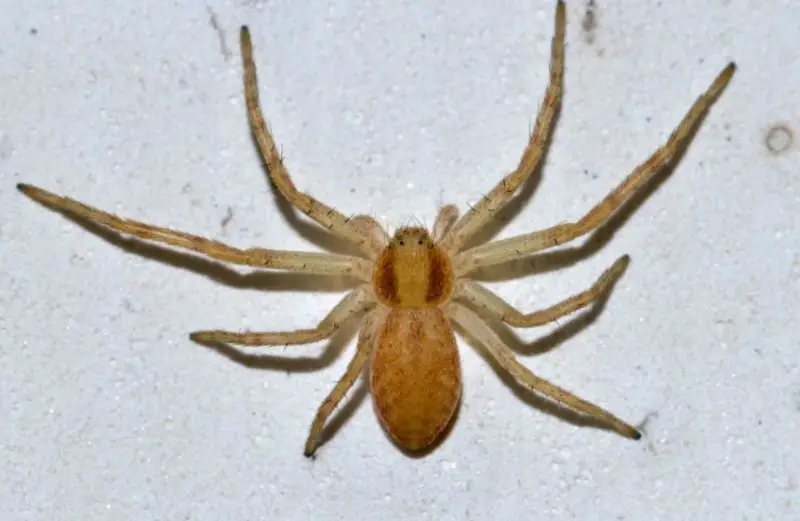
The running crab spider, scientifically known as Philodromus spp., is a brown arachnid with a mottled body and spiny, long legs. Its abdomen is mostly dark brown, while the carapace features dark brown sides and a light brown middle. This coloration offers excellent camouflage on tree bark, forest floors, and dried leaves.
Agile and strong, these spiders chase down prey instead of spinning webs. Despite their name, running crab spiders are harmless to humans and rarely bite.
Banana Spider
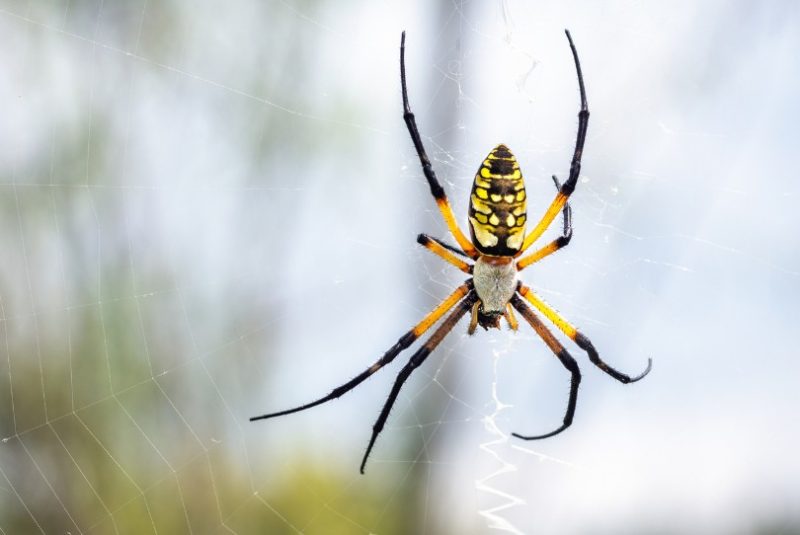
The banana spider, or Trichonephila clavipes, is a stunning orb-weaver with a long, slender yellow abdomen dotted with white, resembling a banana. Common in forests, woodlands, and gardens, its dark carapace sports a skull-like pattern of whitish hair and spots.
The spider’s long legs are golden yellow with hairy, reddish-brown joints. Females, larger and more noticeable than males, spin distinctive golden-yellow orb webs to trap prey. Although non-aggressive, their venom is not medically significant.
Yellow Garden Spider
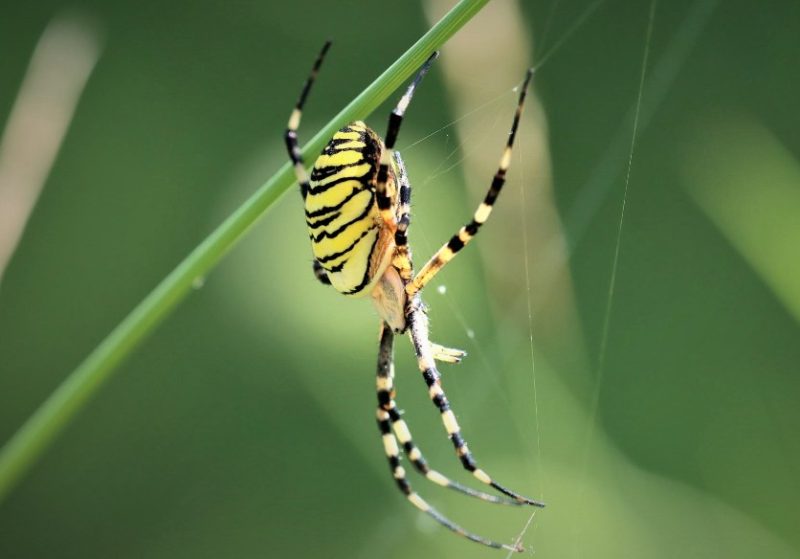
The Yellow Garden Spider (Argiope aurantia), also known as the Black and Yellow Garden Spider or Zigzag Spider, is a beginner-friendly orb-weaver. With a size of 0.75 to 1.1 inches and a lifespan of one year, it’s commonly found in gardens and areas with abundant vegetation.
Hanging upside-down in the center of its wheel-like web, it waits for prey to get trapped. Recognizable by its black and yellow legs and abdomen, this spider is harmless to humans, helping control pest populations by consuming insects.
Banded Garden Spider
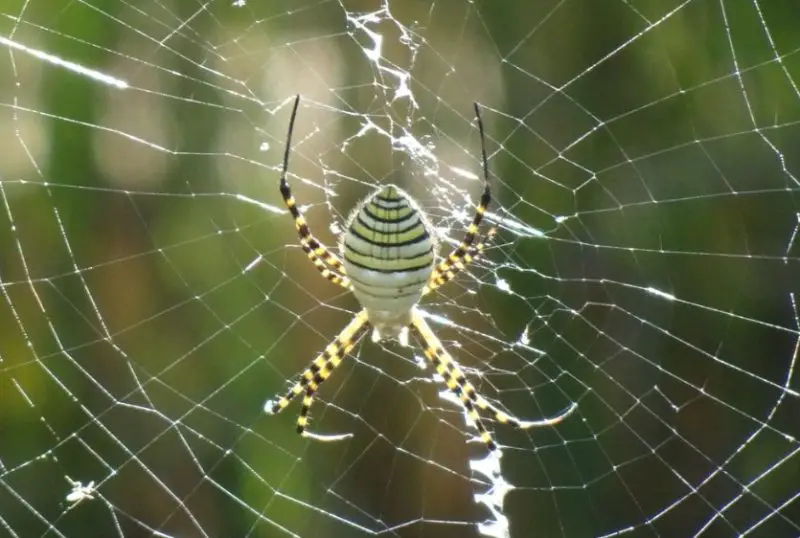
The Banded Garden Spider (Argiope trifasciata), an orb-weaver from the Araneidae family, measures 0.59 to 0.98 inches and has a lifespan of one year. Its name derives from the lateral bands across its abdomen, which vary in color from white to orange, brown, and yellow.
Found in gardens, woodlands, and prairies, it spins large orb webs to catch flying insects. Sensitive leg hairs detect prey vibrations, enabling quick paralyzation and consumption. Harmless to humans, these spiders are beneficial for controlling insect populations.
Woodlouse Hunter
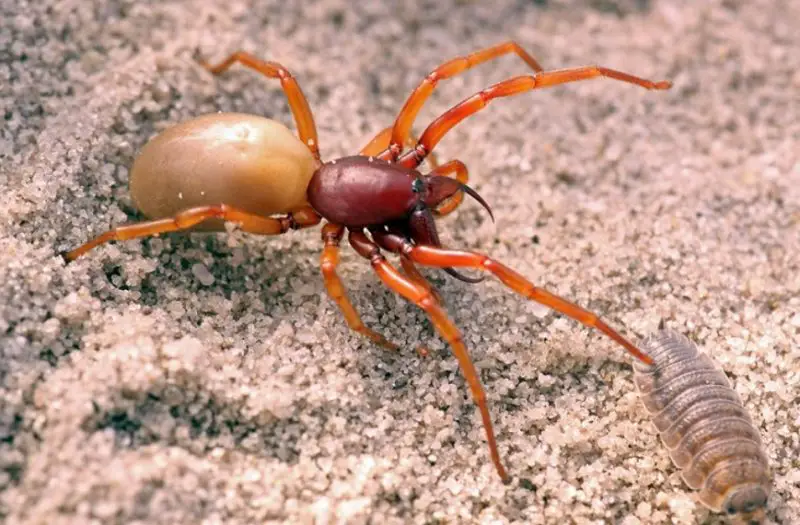
The Woodlouse Spider (Dysdera crocata), a member of the Dysderidae family, measures 0.35 to 0.59 inches and lives 3 to 4 years. Known as the Sowbug Hunter or Pillbug Hunter, it features a dark red carapace, a brownish or tan belly, and long fangs.
Unique with only six eyes arranged circularly, this spider primarily hunts woodlice, ambushing them with venom. Found in silk nests in crevices and under debris, they’re non-aggressive and harmless to humans, though their bite can cause pain.
False Black Widow
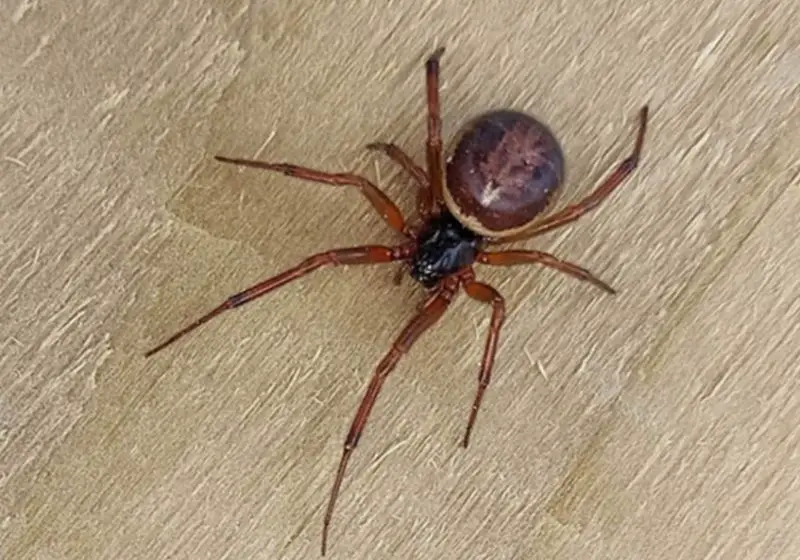
The False Black Widow (Steatoda grossa), part of the Theridiidae family, is a brown to purplish-brown spider with a bulbous abdomen and comb-like structures on its legs. Measuring 0.25 to 0.4 inches and living 1 to 6 years, it’s often mistaken for the true black widow.
Unlike true widows, it lacks the reddish-orange hourglass marking. Found indoors, it spins sticky cobwebs to trap prey. Although its bite is painful, it’s not medically significant, and symptoms usually fade without treatment.
Long-bodied Cellar Spider
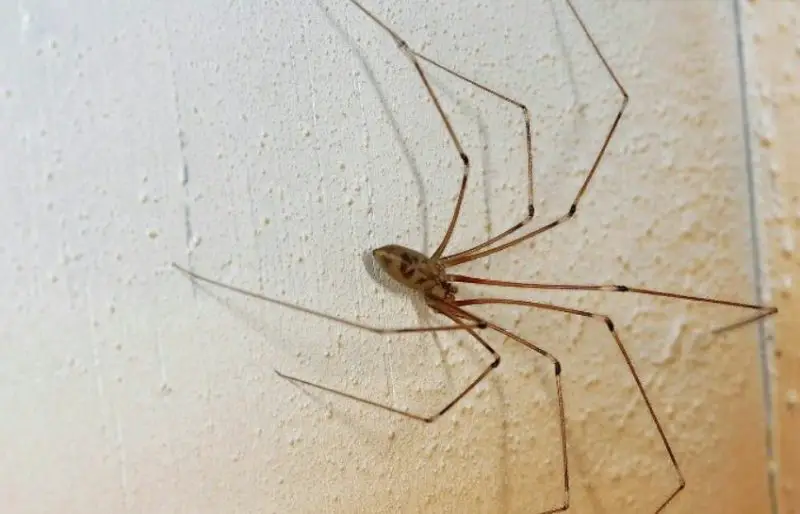
The Long-bodied Cellar Spider (Pholcus phalangioides), part of the Pholcidae family, is a beginner-friendly spider known as “daddy longlegs.” With a body up to 0.4 inches and a lifespan of two years, it’s tan or brown with long legs, often mistaken for harvestmen.
Found indoors, especially in cellars, it spins tangled webs to trap prey. Vibrating the web to entangle victims, it paralyzes them with mild, harmless venom. This spider also vibrates its web to evade predators.

